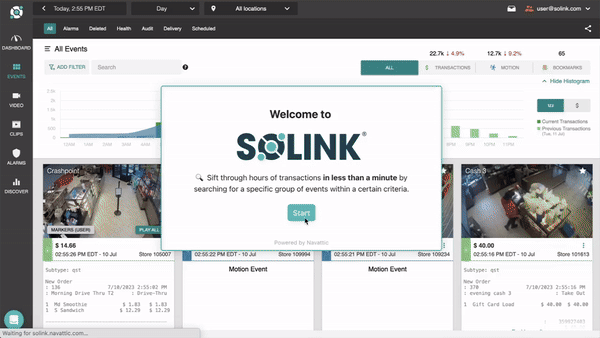AI in security
Artificial intelligence (AI) in security is the leveraging of modern computer technology such as machine learning (ML) to improve the capabilities of security hardware and software, such as security cameras, intrusion detection systems, and video analytics.
What is AI in security?
Artificial intelligence (AI) is teaching computers to learn and act on their own. Machine learning (ML) is one of the main techniques employed in AI. AI in security is a way of leveraging modern computer technology to improve the safety and security of a location. While AI has been used for cybersecurity for many years, the extensions to physical security are more recent.
Solink is driving the adoption of AI in security. Here are two examples of AI in security at work for Solink.
- Solink’s Video Alarms Service: Solink is using AI to turn Motion Search into a complete alarm service that improves the security of locations compared to traditional alarm systems. Users are able to both see intruders earlier by monitoring the area around doors and windows and verify alarms before dispatching emergency services.
- Camera Linking: Solink’s platform can now automatically link cameras based on their overlapping areas of coverage. By monitoring thousands of people as they walk through a building, Camera Linking is able to calculate which cameras are next to each other, link them, and add a button to the screen for easy navigation.
Find suspicious cash handling within your business
Learn how easy it is to uncover suspicious cash handling in our self-guided tour.

Why is AI in security important?
AI in security is important for two main reasons: it improves the overall security level and reduces the labor costs of heightened security. Let’s look at the two examples above.
Solink’s Video Alarms can enhance the value of alarm systems, or replace them in some situations. By giving you the ability to review alarms before requesting emergency responders, you reduce the amount of time emergency responders spend responding to false alarms. Moreover, you might receive better and faster responses because you have verified the alarm and provided real-time video of the incident in process.
Camera Linking makes navigating through an area easier, especially when there are many cameras or you aren’t familiar with the floor plan and/or camera naming conventions. Many security and loss prevention personnel would like to have a digital camera floor plan in place but do not have time to annotate the floor plan in practice. Camera Linking gives you this enhanced security level without the upfront time commitment.